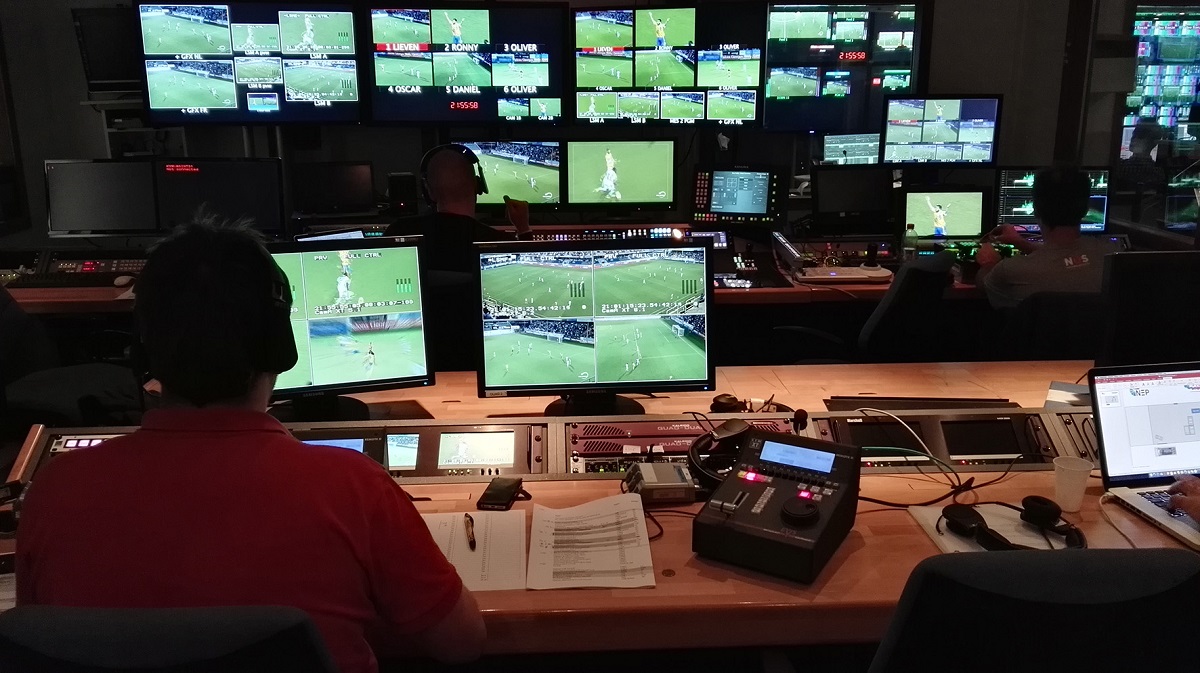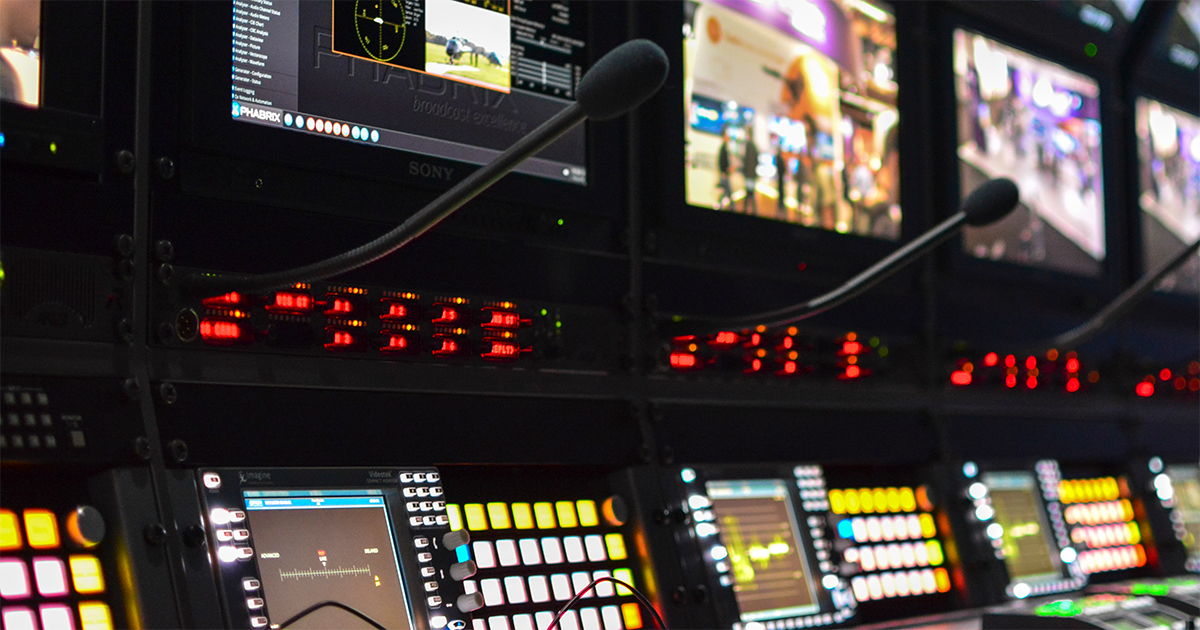In most parts of the world we won’t be able to go back to stadiums to watch sports or live events any time soon. Stadium owners, promoters, leagues, federations and content producers are all losing out due to the restraints imposed by COVID-19.
The sheer popularity of sports in particular has driven media rights contracts sky high and has created a culture where production innovation is key in the battle for eyeballs. With so much money in the sports production business before the pandemic struck, it followed that production innovations around cameras, screens and in-stadium enhancements were encouraged and budgets were healthy.
Nowadays, every cent counts. What does this mean for sports production and technology — and where should the money go? In a blog post titled “How are COVID Market Economics Changing the Nature of Sports Production?,” SDNsquare CEO Henry Alexander argues that the industry needs to focus less on fixed studios and production units and really take advantage of the flexibility offered by IP production and broadcast technology.
“Increasingly the nature of IP production and broadcast means that it will become easier and more effective to maintain a fleet of portable units and OB vans which don’t need to maintain their own devoted equipment (which is both expensive and space-consuming), but which instead process through a fully optimized IP central studio.
“The value in IP and cloud delivery for CAPEX to OPEX solutions is clear — from cost efficiency, mitigation of reduced satellite bandwidth due to the reallocation of frequency bands and not least the flexibility for future technology applications. IP also opens up new avenues through back-channel capability, enabling new features including content replacement or regional advertising.”
— Steve Payne, MediaKind
“In addition, centralized remote production optimizes greatly resource use and productivity as the same team and equipment can produce several events per day rather than one from a single location,” says Alexander.
“Not to forget the potential increase in production quality and monetizing content by enabling broadcasters to offer higher picture quality (4K, 8K,…), new graphical or data services while decreasing setup times and increasing scale-up agility. This means also fewer staff and less expensive equipment needed on site, plus big savings on personal transport and accommodation.

“And of course centralized remote production will also benefit the environment by minimizing carbon footprint and power usage. Innovation in our industry will also be significant when it comes to the deployment of 5G for content distribution and access.
“This will certainly help to reduce the barrier to entry in terms of investment for new entrants that need their own infrastructure, and could offer new innovative and cheaper services. This all could mean that the dominance of major sports such as football or tennis across TV networks may be on the wane,” says Alexander.
Moving from Satellite to IP for Cost Efficiency
Remote production over IP increased the availability of live content in 2020 by reducing the amount of equipment and personnel needed at venues whilst allowing remote crews to cover more events in one day from the same location. It also allowed production managers keep their staff safe, which of course has been the overriding priority during the COVID-19 pandemic crisis.
“The terms IP and cloud are sometimes used interchangeably — yet they refer to different aspects of the ecosystem,” says Steve Payne, SVP and Regional Head for Americas at MediaKind.
“IP may be the inherent practical infrastructure to use to implement microservices and cloud-based solutions, but they are not synonymous. Broadcasters are in various stages of both IP transformation and adoption of cloud-based technologies,” says Payne in a piece titled ‘Sports Must Move From Satellite to IP’.
“The industry is ready for sports broadcasters to migrate from satellite to IP signal delivery to reach their audiences. Several U.S. broadcasters and media operators have already begun this transition, looking to integrate better and deliver live content using IP- and cloud-based solutions while still employing traditional industry-specific hardware.
“The value in IP and cloud delivery for CAPEX to OPEX solutions is clear — from cost efficiency, mitigation of reduced satellite bandwidth due to the reallocation of frequency bands and not least the flexibility for future technology applications. IP also opens up new avenues through back-channel capability, enabling new features including content replacement or regional advertising,” says Payne.
Of course IP transport for multiple camera feeds from a venue adds a new issue: latency. When looking at reliable transport over the public internet there are different codecs, protocols and practices on offer. Often, the choice of which technologies to deploy involves trade-offs when deciding what latency and bit-rates are required and acceptable to the level of the production.
Enablers for Live Production with Less Crew on the Ground
Cellular bonding technology has been a key factor in the newsgathering market for over a decade. More recently it has been working its way into the sports market.
Technologies from specialist vendors in the cellular bonding space are emerging for multicamera IP-based remote production for Tier 1 events and of course there are now numerous applications for this technology for Tier 2 and 3 sports production companies outputting to streaming platforms. This also means, effectively, that the same technologies are now being relied upon to transport the highest level sports content right alongside a parent watching their college student participate in a minority sport.
5G technology, remote production, cloud-based operation and SaaS models are all in play now as enablers for live production with many less crew on the ground and more crew staying at home. 5G is already being trialed in a different application for stadiums, where it can form a “dome” within the stadium enabling both fans and production companies to have greater access to cellular services.
“Increasingly the nature of IP production and broadcast means that it will become easier and more effective to maintain a fleet of portable units and OB vans which don’t need to maintain their own devoted equipment (which is both expensive and space-consuming), but which instead process through a fully optimized IP central studio.”
— Henry Alexander, SDNsquare
In both scenarios, we’re seeing the end of the “passive fan” as technology begins enabling the consumer to interact with sports and other live event content they way they can with other forms of video, stills and social media.
On the live production side, the pandemic in 2020 has forced everyone away from physical control panels in control rooms and onto touchscreens and the internet. Big shows retain familiar roles such as audio, graphics, replays and TD — but now physically distant and remote, and via soft panels. Plus smaller shows — perhaps never covered in the past — can now be brought to life from a single tablet.
For 2021, a real opportunity for the live production community is to cease applying old workflows to new technologies — and look afresh at how shows can be produced in different ways to tell new, more compelling stories.


